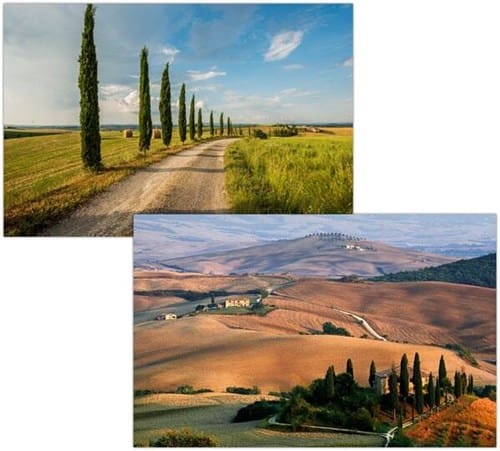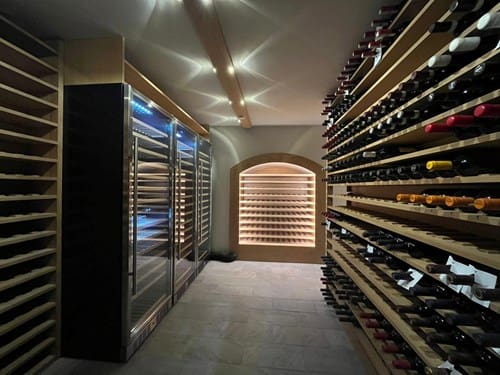Tuscany is world renowned for its rolling fields of gold, mediaeval towns and most of all, its wines. Paolo Piccardi, Master Sommelier at Hotel Savoy in Florence, shares his tips and insights on this fascinating wine region, and why having a better understanding of the terroir, vineyards and wine producers is the future of wine drinking.
What do you consider Tuscany’s signature wine style?
Tuscany produces a remarkable variety of wines. It is noted for its Chianti Classico, many produced in wineries just a few kilometres from Florence, and its Brunello di Montalcino, found further south toward Siena.
The wines from Montalcino, Bolgheri, and the central, historical district of Chianti Classico are the heart and soul of our wine region. Our customers hold the great Tuscan wines and various Super Tuscans - made from high-quality, non-native grapes and rare blends - in high esteem. One of the most magical times to visit wine producers is in July or August when the vineyards are lush and bursting with ripe grapes before the harvest begins.
How did wine production evolve in Florence?
Wine in Tuscany was first codified during the Renaissance by a decree from Cosimo III de'Medici, Grand Duke of Tuscany in the early 18th century. This laid the foundation for today's DOC (designation of controlled origin) guidelines.
Throughout the 19th and 20th centuries, Tuscany overcame the damage caused by the phylloxera plague, which affected vineyards worldwide, with its unique approach to innovation. Its history of wine in the 1900s was also marked by the birth of oenology; vineyard and cellar work became subject to precise regulations, with particular attention paid to temperatures during the various vinification stages.
One name that made history in Tuscany and beyond is Giacomo Tachis (1933-2016), the greatest Italian oenologist of all time. Over the years, Tachis collaborated in creating new types of Italian red wines, particularly Sassicaia, Solaia, and Tignanello, which we know as Super Tuscans. He made innovative choices to modernise wine production in the Chianti Classico area, using malolactic fermentation, and ageing in barriques, which came to be defined as one of the symbols of the Italian wine renaissance.

Who are your favourite local wine producers?
Querciabella in Greve, Chianti, and Fattoria di Bacchereto in Prato province, south and north of Florence respectively; both produce interesting organic and biodynamic wines - Batàr and Carmignano Terre a Mano. With minimal human intervention, their natural viticultural processes produce wines allowing grapes to express themselves more naturally and nature to speak through the glass.
Querciabella's Batàr is made using high quality Chardonnay and Pinot Bianco grapes. The result is an intensely yellow coloured wine, with a fragrant nose featuring fruit forward, spicy notes, a rich palate, and a long finish.
Carmignano Terre a Mano uses a blend of Sangiovese and Bordeaux grape varieties. In the cellar, the wine making takes place with minimal intervention, allowing the grapes to retain their maximum expressive potential.
Are there any new, unusual styles of wine emerging in Tuscany?
Podere Fortuna, famous for producing Pinot Nero (Pinot Noir), is located in the hills of Mugello, north of Florence in the heart of Tuscany. Thanks to the unique terroir, with its more temperate summers, the typically capricious Pinot Nero grape can develop at its best in the vineyard.
Any other local producers we should look out for?
The Chianti Classico region extends from Florence to Siena, and undoubtedly among the leading wines is the IGT Tignanello from the Marchesi Antinori family. Tignanello represents the first Sangiovese grape matured in a barrique and the first modern red wine blended with non-traditional varieties, such as Cabernet Sauvignon and Cabernet Franc. In the same vineyard, they produce the excellent and world-renowned Solaia, a Cabernet Sauvignon dominant Sangiovese and Cabernet Franc blend.
Further south, Brunello di Montalcino is situated on the eponymous hill which, millions of years ago, was under the sea; it therefore has a wide range of soils and produces a wine with an unmistakable profile. Among the most famous Brunello wines is Biondi Santi Tenuta Greppo.
Other top wines from the area include Ornellaia Bolgheri Superiore from the Frescobaldi family. These wines pair well with meat dishes such as Chianina beef and game, and generally with all roast meats. They are also excellent with aged cheeses like Tomme and Tuscan pecorino and truffle-based dishes. Last but not least, we have the 100% Merlot Tuscan wine, Masseto. A legendary wine from a terroir with unique characteristics, Masseto is one of the most prestigious wines in the world.

What should we look out for this summer and beyond?
My advice is to look for wines that represent their terroir: simple, well-made wines from companies that respect their vineyard. I like to consider wine in all its production phases so the final product can reflect the soul of a territory.
To choose the right wine, visit an independent wine shop, or better yet, visit the wineries and producers directly so you can experience the terroir, smell its aromas and let yourself be carried away by the emotion of it all.
Do not rely on trends and do not be afraid to experiment with something new. Sparkling wines do not only mean Prosecco; red wine in Tuscany does not necessarily have to be Chianti or Brunello. Finally, do not choose wine based on the label or price; there are pleasures to be discovered in bottles of all price ranges.
In our new wonderful wine cellar at Hotel Savoy, 1,500 bottles are looked after in a dark, silent and calm space, allowing each to come alive with their stories and emotions when opened.
I look forward to taking you on a wine journey through time, scents, and flavours, complementing the wonderful delicacies created by our Chef Fulvio Pierangelini.
To discover more about our wines and book your next escape to Florence, call +39 055 27 35 1 or email reservations.savoy@roccofortehotels.com

